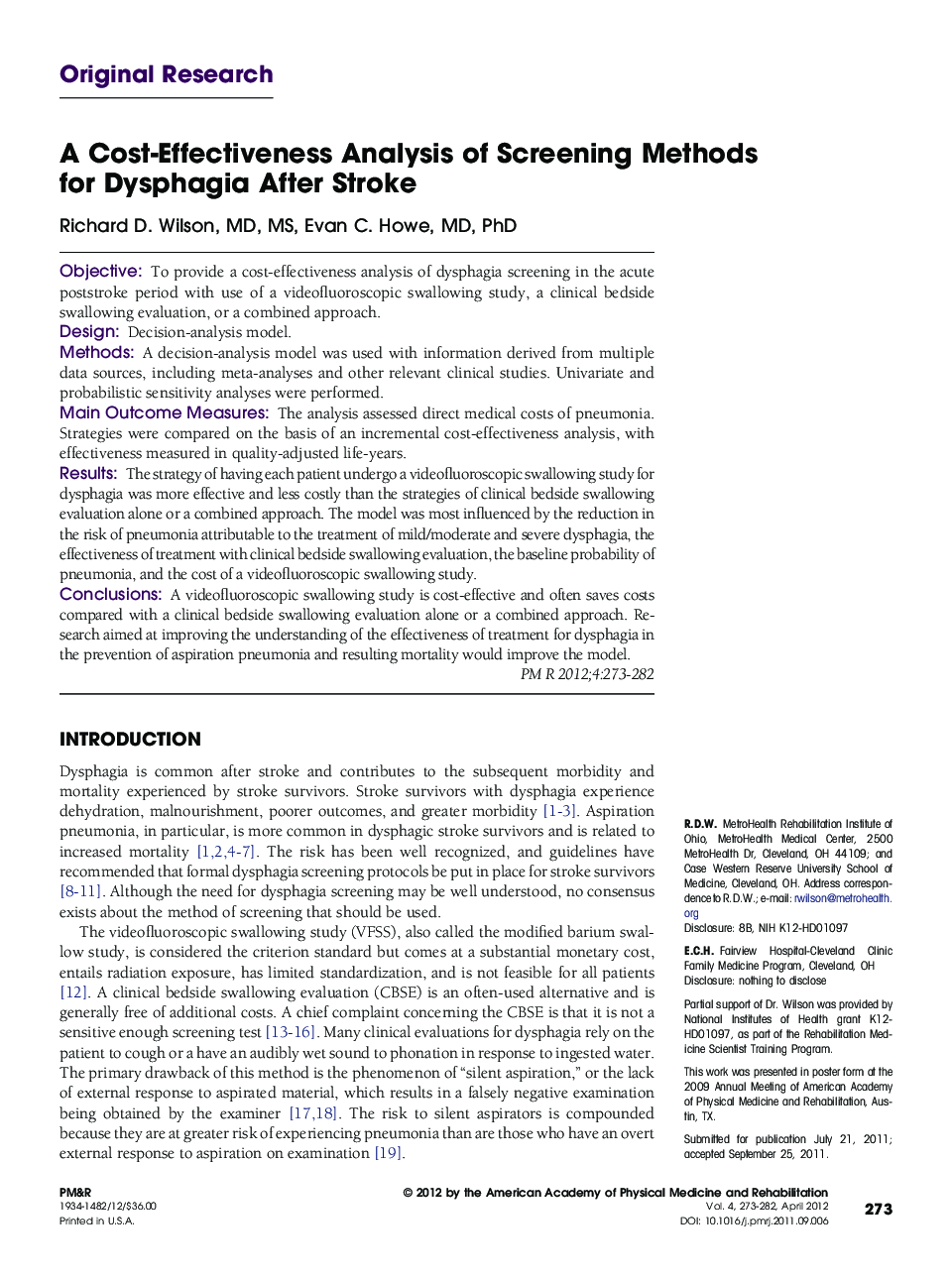| Article ID | Journal | Published Year | Pages | File Type |
|---|---|---|---|---|
| 2705799 | PM&R | 2012 | 10 Pages |
ObjectiveTo provide a cost-effectiveness analysis of dysphagia screening in the acute poststroke period with use of a videofluoroscopic swallowing study, a clinical bedside swallowing evaluation, or a combined approach.DesignDecision-analysis model.MethodsA decision-analysis model was used with information derived from multiple data sources, including meta-analyses and other relevant clinical studies. Univariate and probabilistic sensitivity analyses were performed.Main Outcome MeasuresThe analysis assessed direct medical costs of pneumonia. Strategies were compared on the basis of an incremental cost-effectiveness analysis, with effectiveness measured in quality-adjusted life-years.ResultsThe strategy of having each patient undergo a videofluoroscopic swallowing study for dysphagia was more effective and less costly than the strategies of clinical bedside swallowing evaluation alone or a combined approach. The model was most influenced by the reduction in the risk of pneumonia attributable to the treatment of mild/moderate and severe dysphagia, the effectiveness of treatment with clinical bedside swallowing evaluation, the baseline probability of pneumonia, and the cost of a videofluoroscopic swallowing study.ConclusionsA videofluoroscopic swallowing study is cost-effective and often saves costs compared with a clinical bedside swallowing evaluation alone or a combined approach. Research aimed at improving the understanding of the effectiveness of treatment for dysphagia in the prevention of aspiration pneumonia and resulting mortality would improve the model.
